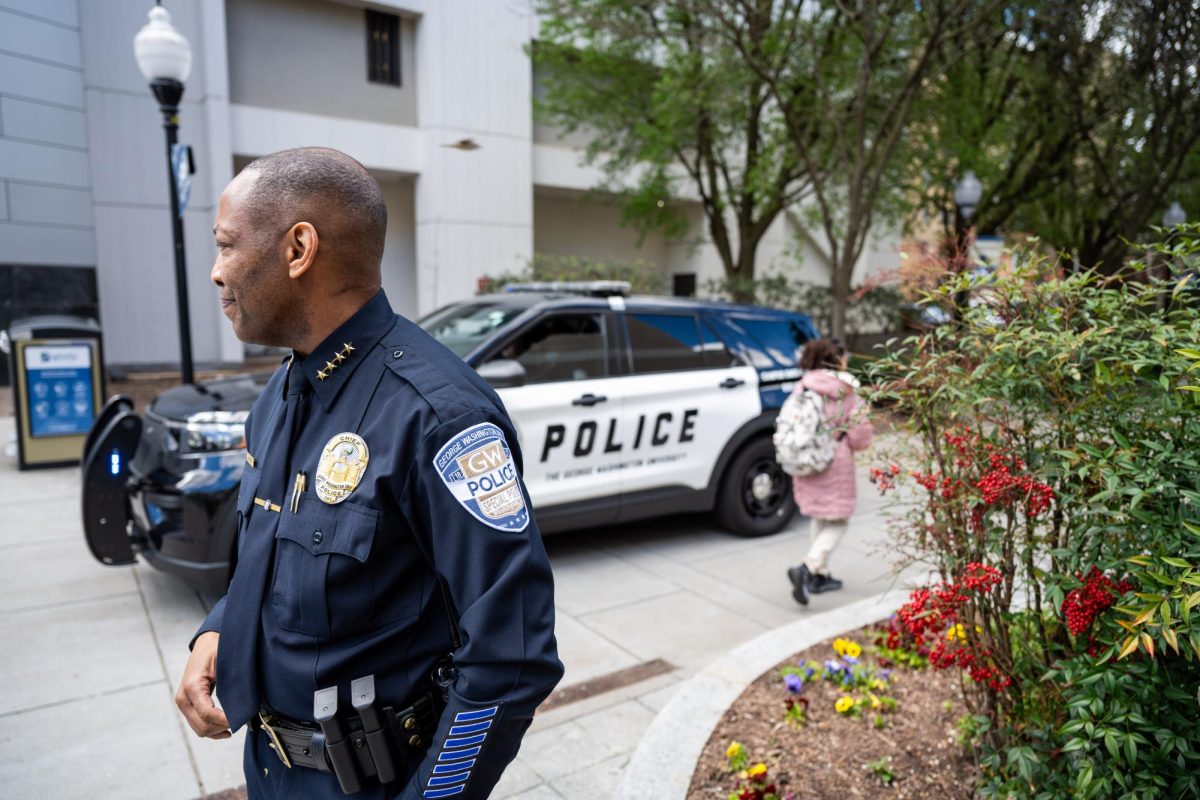
Updated: March 17, 2015 at 2:51 p.m.
This post was written by Hatchet reporter Wanyan Xu.
Richard Kurin, the Smithsonian Institution’s under secretary for history, art and culture, spoke about protecting cultural heritage after a crisis in a presentation at the School of Media and Public Affairs Monday.
Kurin was invited by Bernhard Streitwieser, an assistant professor of international education in the Graduate School of Education and Human Development, as part of his course, “UNESCO: Agenda for the 21st Century.” The course is part of the Graduate School of Education and Human Development’s UNESCO Chair in International Education for Development.
Here are the key points:
1. Cultural heritage brings all of us together
Earlier this month, the Islamic State posted a video of members destroying ancient sculptures in Iraq’s Mosul Museum because they claimed the works represented idolatry.
But Kurin said those “wonders of the world” can help us learn about the past while also gaining a better understanding of different cultures today.
“It’s not just about governments, states, it’s about all human beings and people,” Kurin said.
2. Many artworks are undervalued
Kurin showed a table of more than 1,000 heritage sites across the world – places with special cultural significance – but the United States was not included on the list. He said countries that have fewer heritage sites have undervalued their artwork and do not recognize the importance.
He said the United States has landmarks like the Statue of Liberty or the Grand Canyon, but hasn’t preserved the heritage of different cultures.
“[People] think these works of art are treasures as part of their nation’s identity, but they’re less important in terms of certification as a cultural heritage site,” Kurin said.
3. Preserving cultural heritage
Preserving heritage, a focus of UNESCO, is an area where Kurin said everyone can help out.
Kurin said heritage faces threats like natural decay, pollution, war and development. He highlighted specific sites in danger, like the Mostar Bridge in Herzegovina and the Borobudor Buddhist Temple in Indonesia.
To protect cultures, Kurin said UNESCO and other organizations need to provide emergency funding to support those areas. He also said there must be international cooperation among countries to raise awareness and public support.
This post was updated to reflect the following correction:
The Hatchet incorrectly reported that the lecture was part of a series from the United Nations Education, Scientific and Cultural Organization. The speaker was invited by Graduate School of Education and Human Development assistant professor Bernhard Streitwieser as part of his course “UNESCO: Agenda for the 21st Century.” We regret this error.




